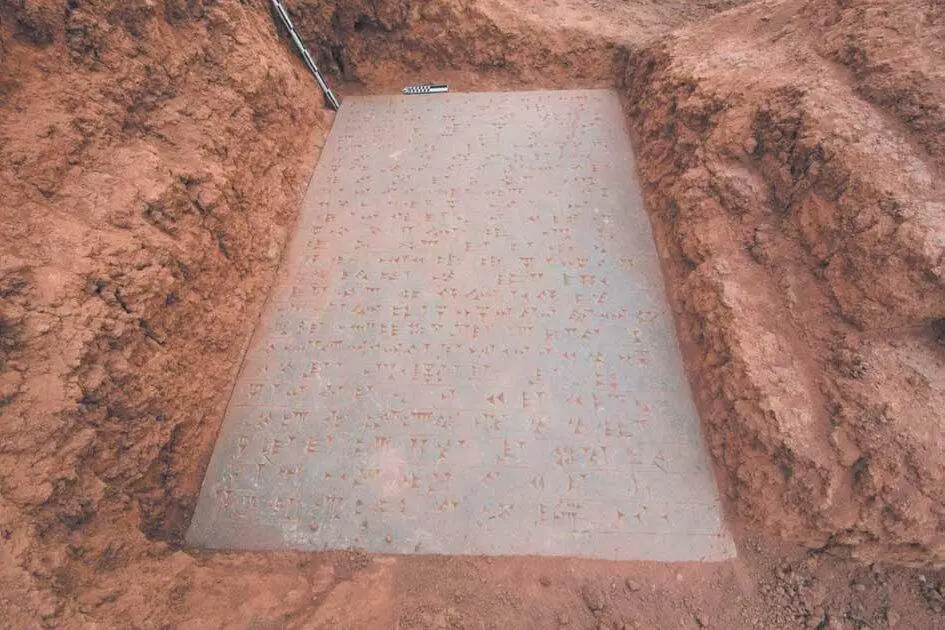
![Palace door which belonged to the Assyrian king Adad-Nirari III who ruled from 810-783 BCE [@ancientorigins/Twitter]](https://i0.wp.com/www.middleeastmonitor.com/wp-content/uploads/2022/12/Fjn0SoFWIAAUBhI-e1670944975200.jpeg?fit=945%2C630&ssl=1)
Palace door which belonged to the Assyrian king Adad-Nirari III who ruled from 810-783 BCE [@ancientorigins/Twitter]
An archaeological dig in Iraq’s ancient city of Nimrud has revealed a large palace door sill which belonged to the Assyrian king Adad-Nirari III who ruled from 810-783 BCE.
According to a report last week by the Art Newspaper, the 6.5-foot-high door threshold was unearthed during the first major dig in the site since it was severely destroyed by Daesh in 2016. Excavations began in mid-October.
Michael Danti, the archaeologist leading a team from the University of Pennsylvania was quoted in the report as saying “This find is significant”.
“Not only because it survived the Babylonian siege and destruction by Isis intact but also because of its size. I’ve seen tablets that are smaller than one of the sign forms [cuneiform letters] on this slab.”
Danti also added that the site has yielded similar finds from previous excavations, the earliest of which was in the 1840s under British archaeologist Austen Henry Layard. The recent find is thought to have been one of two excavated by Layard, with the other having been taken back to the British Museum in London where it is still on display.
Describing the slab’s discovery as a kind of “forensic archaeology”, Danti suggests it was likely uncovered by Layard and then re-buried in a new ruin mound after he left and the high-walled mud-brick palace collapsed. “We had to re-excavate the old excavations,” he said.
The vast majority – some 90 per cent of Nimrud’s excavated areas – were decimated by Daesh after being targeted in multiple attacks. “ISIS might well have been aware of its existence,” Danti said of the door sill. “And yet it was so well preserved.”
Earlier this year, Danti and his team at the Iraq Heritage Stabilization Program also uncovered several ornate Assyrian marble carvings dating back around 2,700 years, reported Art News.